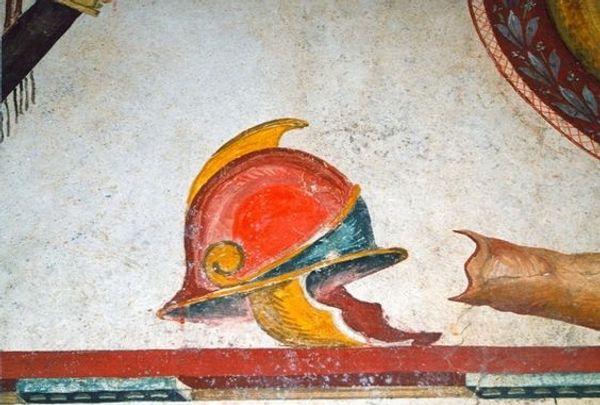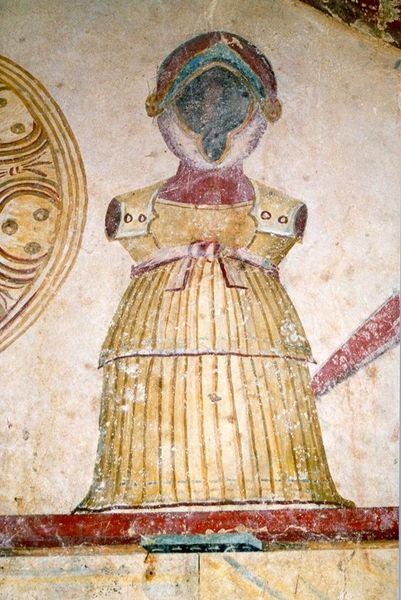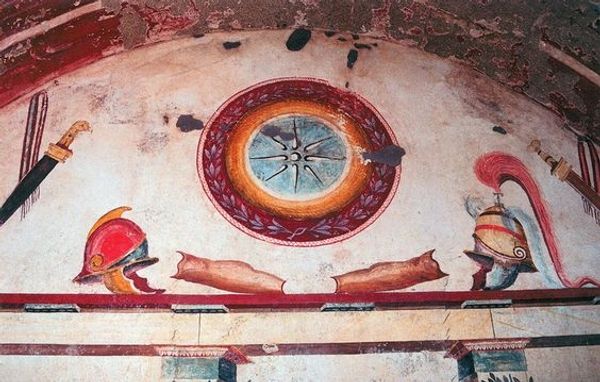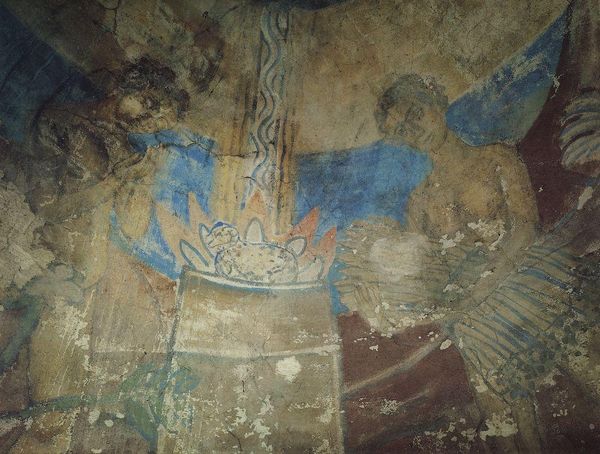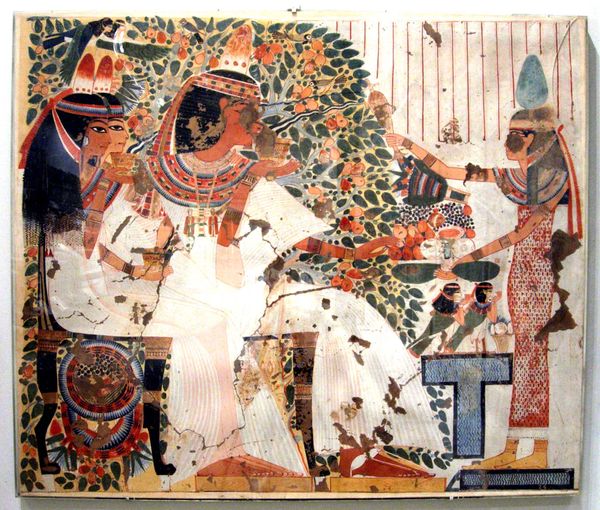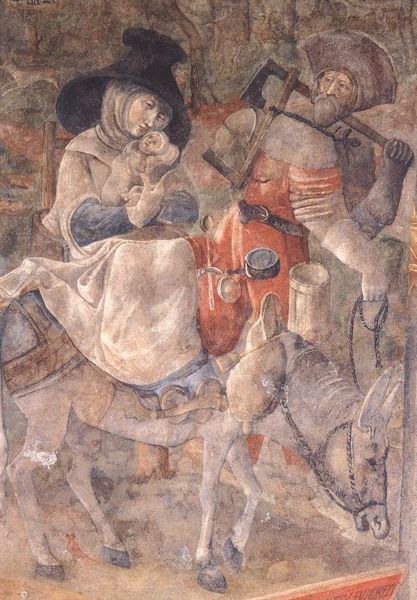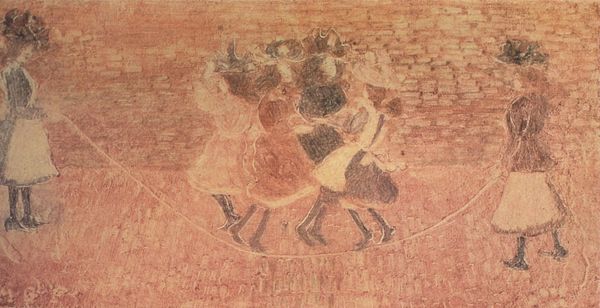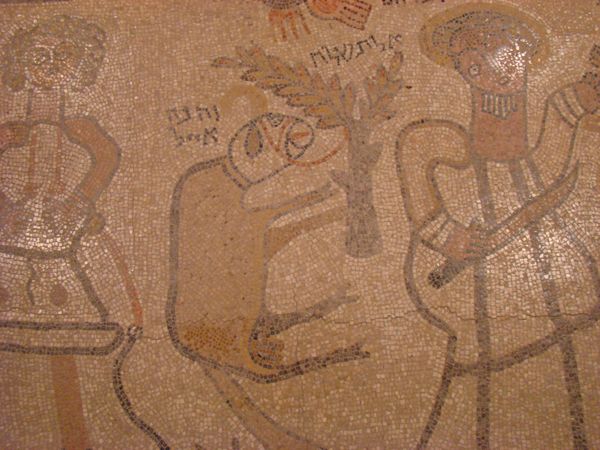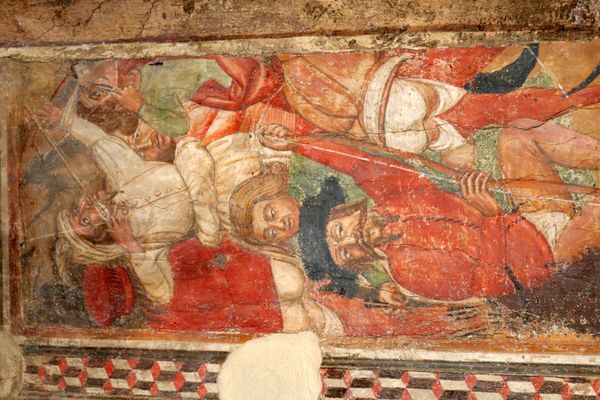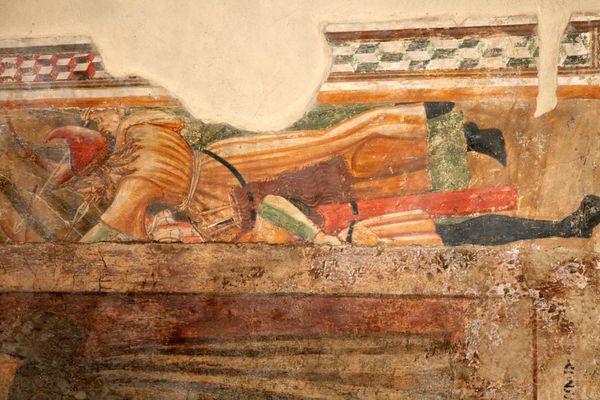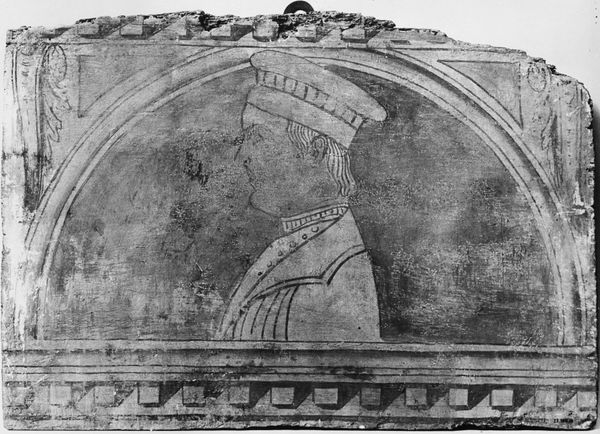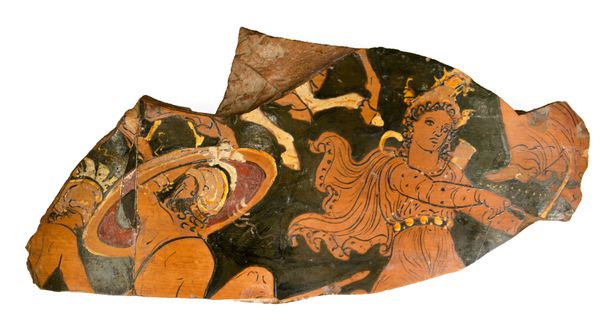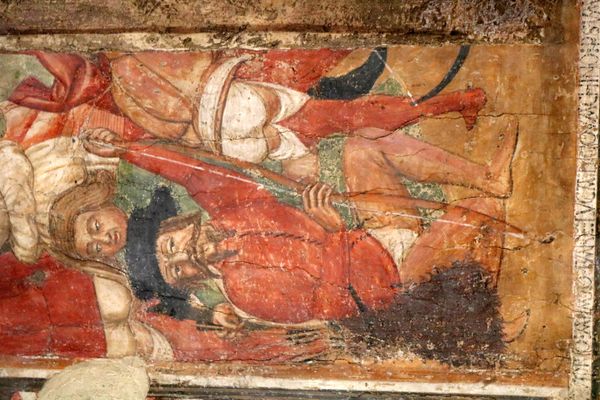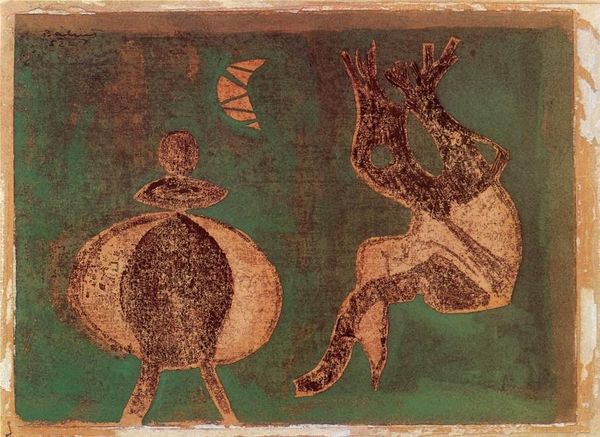
Military Armor, Arms, and Gear from the Tomb of Lyson and Kallikles in Ancient Mieza, Greece 150 BC
0:00
0:00
fresco
#
water colours
#
greek-and-roman-art
#
figuration
#
fresco
#
oil painting
#
ancient-mediterranean
#
history-painting
Copyright: Public domain
Curator: This is a section of a fresco showcasing military armor, arms, and gear. The original work dates back to around 150 BC, found within the tomb of Lyson and Kallikles in ancient Mieza, Greece. Editor: Immediately, the textures draw me in. There's a dreamlike, almost melancholic feel. The fragmented forms of the helmet and sword, combined with faded colors, speak of the passage of time and forgotten power structures. Curator: Indeed. It’s important to consider that such frescoes weren’t merely decorative. Displaying weaponry was a symbolic act, a performance of authority within a specific social hierarchy. It also represents a crucial political period of conquest, control, and imperialism for ancient Greek society. Editor: Absolutely. Looking at the plumes on the helmet, they aren’t simply about military function; there’s a flamboyant theatricality here, gesturing to constructed masculinities of the time and the staging of military might. This wasn't just about protection, but projecting an image of strength. We need to unpack that symbolism. Curator: We also must recall the archaeological context. The discovery of these tomb paintings offers a lens into the cultural and artistic practices of Macedonian society, highlighting the societal values around military status, honor, and remembrance of the dead. These images operated within the confines of elite societal power structures. Editor: Considering contemporary theoretical frameworks, this work prompts discussions on power dynamics, memorialization, and the role of masculinity in warfare and political narratives. The art's continued existence becomes an invitation to question traditional accounts of the era and reflect on marginalized or erased identities. Curator: A potent reminder that art and visual imagery always plays a key role in understanding history and that the stories we see—and the ones left unseen—reveal just as much. Editor: Ultimately, the image transcends time. The fresco embodies broader dialogues about history, power, gender, and the politics embedded within our cultural past, still actively shaping contemporary socio-political landscapes.
Comments
No comments
Be the first to comment and join the conversation on the ultimate creative platform.
